Thermo Fisher Scientific Thermo Manuale utente
- Tipo
- Manuale utente

Visit us online to register your warranty
www.thermoscientific.com/labwarranty
User Manual
Thermo®Dewars
Cryogenic Transfer Vessels
Operation Manuals and Parts List LT509X34 (7000803) Rev. 7

Thermo Scientific
MANUAL NUMBER LT509X34 (7000803)
7 ECNM-000831 02/24/21 Removed Warranty caution from preface page ii, added Safety Precautions
in Preface page iii, WEEE Compliance in page 7-1 and removed EUT
statements in page 4-1. Updated Specifications for Environmental conditions
in page 4-1. TFI
6 41238 01/27/17 Combined languages into one file slb
5 40578 2/18/16 Matched symbols and labels to unit ccs
4 30559 11/13/13 Added environmental conditions to pg 4-1 ccs
3 28501 4/13/12 Removed CE & declaration of conformity reference on pg 4-1 ccs
2 27797 9/21/11 Added new manufacturer icon and euro rep. ccs
1 27457/SI-10618 7/21/11 Added CE reference number - pg 4-1 ccs
0 -- 5/13/10 Transfer to Marietta (was LT509x34 10/22/09) ccs
REV ECR/ECN DATE DESCRIPTION By
Preface
Cryogenic Transfer Vessels i
Catalog numbers Model Numbers Volume
TY509X1 803 5 liter
TY509X2 804 10 liter
TY509X3 805 20 liter
TY509X4 806 30 liter

Thermo Scientificii Cryogenic Transfer Vessels
Preface
Contains Parts and Assemblies
Susceptible to Damage by
Electrostatic Discharge (ESD)
CAUTION
Important Read this instruction manual. Failure to read, understand and follow instructions in this manual may
result in damage to the unit, injury to operating personnel, and poor equipment performance. s
Caution All internal adjustments and maintenance must be performed by qualified service personnel. s
Warning Nitrogen gas can cause suffocation without warning. Store and use liquid nitrogen only in a
well-ventilated place. As the liquid evaporates, the resulting gas displaces the normal air in the area.
(The cloudy vapor that appears when liquid nitrogen is exposed to the air is condensed moisture, not
the gas itself. The issuing gas is invisible.) In closed areas, excessive amounts of nitrogen gas reduces the
concentration of oxygen and can result in asphyxiation. Because nitrogen gas is colorless, odorless, and
tasteless, it cannot be detected by the human senses. Breathing an atmosphere that contains less than
19.5% oxygen can cause dizziness and quickly result in unconsciousness and death. Therefore, the use
of oxygen monitoring equipment is strongly recommended. s
Warning Contact of liquid nitrogen with the skin or eyes may cause serious (freezing) injury. s
Warning Do not roll. Always keep liquid nitrogen vessel in an upright position. Exercise caution to
prevent spilling and splashing. s
Material in this manual is for information purposes only. The contents and the product it describes are subject
to change without notice. Thermo Fisher Scientific makes no representations or warranties with respect to this
manual. In no event shall Thermo be held liable for any damages, direct or incidental, arising out of or related to
the use of this manual.
Intended Use:
The Thermo Fisher Scientific cryogenic transfer vessels are intended to store biological samples at cryogenic
temperatures. These products are comprised of a vessel and a lid, with or without a level monitor.
Unintended Use:
These products are not intended for use within the patient environment.
When this manual is translated into other languages, the US English version is binding.
© 2021 Thermo Fisher Scientific. All rights reserved. Printed in U.S.A.

Thermo Scientific Cryogenic Transfer Vessels iii
Preface
Important operating and/or maintenance instructions. Read the accompanying text carefully.
Potential electrical hazards. Only qualified persons should perform procedures associated with this
symbol.
Extreme temperature hazards. Only qualified persons should perform procedures associated with this
symbol.
Potential biological hazards. Proper protective equipment and procedures must be used.
This symbol when used alone indicates important operating instructions which reduce the risk of
injury or poor performance of the unit.
CAUTION: This symbol, in the context of a CAUTION, indicates a potentially hazardous situation
which if not avoided could result in minor to moderate injury or damage to the equipment. s
CAUTION: This indicates a situation which may result in property damage. s
Before installing, using or maintaining this product, please be sure to read the manual and product
warning labels carefully. Failure to follow these instructions may cause the product to malfunction,
which could result in injury or damage.
WARNING: Unauthorized repair of your freezer will invalidate your warranty. Contact Technical
Service at 1-800-438-4851 for additional information. s

Thermo Scientificiv Cryogenic Transfer Vessels
Preface
Do You Need Information or Assistance on
Thermo Scientific Products?
If you do, please contact us 8:00 a.m. to 6:00 p.m. (Eastern Time) at:
1-740-373-4763 Direct
1-800-438-4851 Toll Free, U.S. and Canada
1-877-213-8051 FAX
http://www.thermofisher.com Internet Worldwide Web Home Page
service.led.marietta@thermofisher.com Tech Support Email Address
Certified Service Web Pagewww.unitylabservices.com
Our staff can provide information on pricing and give you quotations. We canSales Support
take your order and provide delivery information on major equipment items or make
arrangements to have your local sales representative contact you. Our products are listed on the
Internet and we can be contacted through our Internet home page.
Our staff can supply technical information about proper setup, operation orService Support
troubleshooting of your equipment. We can fill your needs for spare or replacement parts or
provide you with on-site service. We can also provide you with a quotation on our Extended
Warranty for your Thermo Scientific products.
Whatever Thermo Scientific products you need or use, we will be happy to discuss your
applications. If you are experiencing technical problems, working together, we will help you
locate the problem and, chances are, correct it yourself...over the telephone without a service
call.
When more extensive service is necessary, we will assist you with direct factory trained
technicians or a qualified service organization for on-the-spot repair. If your service need is
covered by the warranty, we will arrange for the unit to be repaired at our expense and to your
satisfaction.
Regardless of your needs, our professional telephone technicians are available to assist you
Monday through Friday from 8:00 a.m. to 6:00 p.m. Eastern Time. Please contact us by
telephone or fax. If you wish to write, our mailing address is:
Thermo Fisher Scientific (Asheville) LLC
401 Millcreek Road, Box 649
Marietta, OH 45750
International customers, please contact your local Thermo Scientific distributor.

Cryogenic Transfer Vessels vThermo Scientific
Table of Contents
Safety Information . . . . . . . . . . . . . . . . . . . . . . . . . . . . . . . . . . . . . . . . . . . .1-1
General Description . . . . . . . . . . . . . . . . . . . . . . . . . . . . . . . . . . . . . . . . . .2-1
Operation . . . . . . . . . . . . . . . . . . . . . . . . . . . . . . . . . . . . . . . . . . . . . . . . . . . .3-1
Filling Instructions . . . . . . . . . . . . . . . . . . . . . . . . . . . . . . . . . . . . . . .3-1
Withdrawal Device . . . . . . . . . . . . . . . . . . . . . . . . . . . . . . . . . . . . . .3-2
Installation . . . . . . . . . . . . . . . . . . . . . . . . . . . . . . . . . . . . . . . . . . .3-2
Operation . . . . . . . . . . . . . . . . . . . . . . . . . . . . . . . . . . . . . . . . . . . .3-4
Removal of Liquid Discharge Device . . . . . . . . . . . . . . . . . . . . . . . . .3-4
Liquid Withdrawal . . . . . . . . . . . . . . . . . . . . . . . . . . . . . . . . . . . . . . .3-5
Measuring Liquid Nitrogen Quantity . . . . . . . . . . . . . . . . . . . . . . . .3-5
Filling Instructions (Thermo 8127) . . . . . . . . . . . . . . . . . . . . . . . . . .3-5
Low Pressure LN2 Supply Filling Method (8127) . . . . . . . . . . . . .3-6
Funnel Filling Method . . . . . . . . . . . . . . . . . . . . . . . . . . . . . . . . . .3-6
Liquid Withdrawal for Model 8127 . . . . . . . . . . . . . . . . . . . . . . . . . .3-7
Specifications . . . . . . . . . . . . . . . . . . . . . . . . . . . . . . . . . . . . . . . . . . . . . . .4-1
Valve Maintenance and Repair . . . . . . . . . . . . . . . . . . . . . . . . . . . . . . . .5-1
Ordering Procedures . . . . . . . . . . . . . . . . . . . . . . . . . . . . . . . . . . . . .5-1
Warranty Information . . . . . . . . . . . . . . . . . . . . . . . . . . . . . . . . . . . . . . . . .6-1
WEEE Compliance . . . . . . . . . . . . . . . . . . . . . . . . . . . . . . . . . . . . . . . . . .7-1
Section 1
Section 2
Section 3
Section 4
Section 5
Section 6
Section 7

vi Cryogenic Transfer Vessels Thermo Scientific
Table of Contents

Cryogenic Transfer Vessels 1-1Thermo Scientific
Section 1 Safety Information
Your Thermo® Dewar has been designed with function, reliability, and
safety in mind. It is the user’s responsibility to install it in conformance
with local electrical codes. For safe operation, pay attention to the
Warnings, Cautions and Notes throughout the manual.
Warnings
Liquid nitrogen is extremely cold; it boils at -196°C. To avoid injury
caused by frostbite:
1. Use extreme care whenever handling liquid nitrogen, liquid nitrogen
storage or transfer vessels, or any objects which have come in contact
with liquid nitrogen.
2. Leave no areas of skin exposed.
3. Use in a well ventilated area.
4. Wear adequate PPE where necessary: face shield, cryogenic gloves and
apron.
5. Do not wear pants with cuffs.
6. Never overfill liquid nitrogen vessels.
7. Always keep liquid nitrogen vessel in an upright position.
8. Do not tightly seal liquid nitrogen containers or prevent nitrogen gas
from escaping.
9. Use extreme care to prevent spilling and splashing of liquid nitrogen
during transfer.
10. Immediately remove any clothing or safety attire on which liquid
nitrogen has been spilled.
11. Read all filling instructions carefully.
12. Release pressure and remove liquid nitrogen before working on a
vessel.
13. Get immediate medical attention for any frostbite injuries caused by
liquid nitrogen.

1-2 Cryogenic Transfer Vessels Thermo Scientific
Section 1
Safety Information
14. Use this product only in the way described in the product literature
and in this manual. Before using it, verify that this product is suitable
for its intended use. If the equipment is used in a manner not
specified by the manufacturer, the protection provided by the
equipment may be impaired.
Warning The venting of nitrogen vapors will create a dilution of the air’s
oxygen concentration necessary to support life. Exposure to this diluted
atmosphere can cause asphyxiation or even death. To avoid personal
injury or death, DO NOT store or use liquid container in areas that have
poor ventilation. Use in a well ventilated area. Place liquid containers
outdoors or in a well ventilated area. Failure to comply with this warning
may cause serious personal injury or even death. s
Warning Extreme temperature and pressure are associated with the
Thermo 8127. To avoid serious personal injury, observe caution when
removing parts or fittings. Wear eye protection and insulated, loose
fittings gloves when removing parts or fittings. Failure to comply with
this warning may result in serious personal injury. s
Caution DO NOT use regulators, valves, gauges, hoses, etc., that have
been used in compressed air service. Failure to observe this warning could
cause serious damage to your container and possible personal injury. s

Cryogenic Transfer Vessels 2-1Thermo Scientific
Section 2 General Description
Mechanical failure is the major cause of problems associated with liquid
nitrogen storage vessels. The vessel necktube supports the full weight of the
inner vessel and the liquid nitrogen it contains. A side or corner blow to
the vessel causes the inner vessel to swing in a pendulum motion,
damaging the neck. Any storage vessel which has been exposed to an
accident, dropped, or lowered to hit on one corner, is more susceptible to
failure. Model 8127 has a support (top and bottom), but mishandling may
still cause problems. Carefully inspect your new Thermo vessel prior to
use. Check for signs of damage which may have occurred during shipment.
It is advisable to fill all new units with liquid nitrogen and watch the liquid
nitrogen loss rate for a few days. If there are any problems, call Technical
Services as soon as possible.
The on-line warranty registration address is listed on the front of this
manual. The unit should be registered within 30 days to make warranty
effective. This information must include the serial number located on the
handle of the unit.

2-2 Cryogenic Transfer Vessels Thermo Scientific
Section 2
General Description

Cryogenic Transfer Vessels 3-1Thermo Scientific
Section 3 Operation
Warning Liquid nitrogen is extremely cold; it boils at -196°C. Extreme
caution should be exercised when handling cryogenic liquids. Always wear
proper safety attire when transferring liquid ni-trogen into or out of
Thermo cylinders. Contact with a cryogenic liquid or cold gas may cause
frostbite to unprotected areas of the body. Protect eyes and skin when
transferring liquid. Stand clear of vent during filling. Loose fitting,
insulated gloves and long sleeves are recommended for arm protection.
Cuffless pants should be worn outside boots or overshoes to shed spilling
liquid. Goggles or face shields shouldbe worn if the possibility of splashing
liquid exists. Failure to observe this warning may lead to severe burns or
eye injuries. s
Caution Never overfill your Thermo dewar with liquid nitrogen. Filling
the tank up to or above the bottom of the necktube may cause immediate
or premature vacuum failure. s
To avoid damage to your Thermo cryogenic vessel (Thermo® 5, 10, 20 and
30), which may result in premature vacuum loss, it is important that the
following procedure be used during the addition of liquid nitrogen to a
warm vessel and on subsequent additions.
1. Add only a small amount of liquid nitrogen (5-10 liters) to new or
warm vessels.
2. Allow this small amount of liquid nitrogen to sit in the covered vessel
for a minimum of 2 hours. This will limit stress caused by the sudden
temperature change associated with adding liquid nitrogen to a warm
vessel.
3. Fill your vessel to the desired level.
4. If you are filling your Thermo dewar from a pressurized source, make
sure that the source tank is at a low pressure (22 PSI or below).
5. If the transfer hose is used for extracting liquid nitrogen from a
pressurized liquid source, always use a phase separator at the end of the
hose (see Parts List for transfer hoses and phase separators).
6. Remember to always wear proper safety attire over clothing, including:
face shield, cryogenic gloves and apron.
Filling Instructions

3-2 Cryogenic Transfer Vessels Thermo Scientific
Section 3
Operation
Withdrawal Device The liquid discharge device provides liquid nitrogen for filling cold traps
and smaller dewars without having to scoop out or pour liquid nitrogen
from the vessel. The liquid discharge device utilizes the normal evaporation
of the cryogenic liquid to pressurize a container by plugging the neck of
the vessel and forming a hermetic seal. The pressurized vessel can then
decant product through the liquid discharge device. Figure 1 shows a
drawing of the liquid discharge device. The primary components of the
liquid discharge device are listed below:
Rubber Stopper: Provides a seal against the walls of the necktube.
Tightening the wingnut expands the rubber stopper.
Pressure Gauge: Indicates the pressure inside the container.
Relief Valve: Relieves pressure inside the container automatically when
excessive pressure is reached.The relief valve is a safety device and cannot
be adjusted.
Vent Valve: Provides means to vent product. The vent valve can be closed
to pressurize the vessel or opened to depressurize the vessel.
Discharge Valve: Allows product to flow out of the vessel through the
discharge device spout.
Safety Cable: Prevents discharge device from accidently exiting completely
from vessel.
Perform the following steps to install the liquid discharge device on a
vessel:
1. Attach the discharge device spout to the liquid discharge device (refer
to Figure 1 for location). A transfer line can be used in place of the
discharge device spout.
2. Verify that the rubber stopper is dry and free from grease and other
contaminants. Check for nicks and gouges that may impair normal
operation.
3. Verify that the cable is in good working condition.
4. Verify that the vent anddischargevalves turnfreely.
5. Loosen wingnut.
6. Lower discharge device into vessel. As the discharge device is lowered,
the nitrogen in the vessel will boil until the diptube has cooled down.
The boiling action is normal. Continue lowering until the rubber
stopper fits snugly.
Installation

Cryogenic Transfer Vessels 3-3Thermo Scientific
Section 3
Operation
7. Tighten the wingnut until it contacts the washer. Tighten wingnut
another 1½ to 2 turns (EXT RBR versions 4-5 turns).
Caution Tighten the wingnut finger-tight only, do not use any tools.
Tightening the wingnut expands the rubber stopper against the necktube
of the vessel. Excessive tightening may damage the necktube. s
8. Clip the safety cable to the vessel handle.
9. Close the vent valve and the discharge valve. Pressurewill slowly begin
to build. Several hours will be required to achieve sufficient pressure to
operate the liquid discharge device. Pressure buildup can be accelerated
by gently tipping the vessel at 45°angle.
Caution Excessive pressure can rupture the vessel. s
Installation (continued)
Figure 3-1. Components

Perform the following steps to withdraw liquid from the vessel using the
liquid discharge device:
1. Turn the discharge valve fully open and then turn back the valve a half
turn. Do not leave the valve in the fully open position.
2. Close the discharge valve to end liquid withdrawal.
Warning Cryogenic liquids are extremely cold and can cause sever burns
similar to frostbite. See CGA Bulletin No.P-12 Safe Handling of
Cryogenic Liquids. (This bulletin may be ordered from Compressed Gas
Ass’n., 4221 Walney Road, 5th floor, Chantilly, VA 20151.) s
Warning Nitrogen vapors in air may dilute the concentration of oxygen
necessary to support or sustain life. Exposure to such oxygen deficient
atmosphere can lead to unconsciousness and serious injury, including
death. s
Warning Modifying safety valves on discharge devices causes potentially
hazardous conditions. s
Perform the following steps to remove the liquid discharge device from the
vessel:
1. Open the vent valve to remove all pressure.
2. Verify that the pressure gauge reads 0.
Warning Vessel must be completely vented before removing the discharge
device. Any attempt to remove the discharge device before the vessel is
completely vented may result in serious personal injury. s
3. Release wingnut.
4. Rock discharge device from side to side to free stopper.
5. Pull discharge device from vessel.
6. When stopper has passed rim of vessel, unclip safety cable.
7. Store liquid discharge device in a clean and dry area.
8. Cover vessel.
3-4 Cryogenic Transfer Vessels Thermo Scientific
Section 3
Operation
Removal of Liquid
Discharge Device
Operation

The procedure below pertains to Thermo 5, 10, 20, and 30 vessels.
1. Use a wooden dipstick. Never use a hollow tube or plastic dipstick to
measure liquid nitrogen.
2. The liquid level will be indicated by a frostline which develops when
the dipstick is removed.
1. Liquid withdrawal for Thermo 5, 10, 20 and 30 is always performed
by pouring or utilizing a withdrawal device (for withdrawal devices, see
Parts List). The withdrawal device pressurizes to approximately 4 PSI;
the pressure forces liquid up the withdrawal tube and out the valve.
2. Always wear proper safety attire.
Warning Liquid nitrogen is extremely cold; it boils at -196°C. Extreme
caution should be exercised when handling cryogenic liquids. Always wear
proper safety attire when transferring liquid nitrogen into or out of
Thermo cylinders. Contact with a cryogenic liquid or cold gas may cause
frostbite to unprotected areas of the body. Protect eyes and skin when
transferring liquid. Stand clear of vent during filling. Loose fitting,
insulated gloves and long sleeves are recommended for arm protection.
Cuffless pants should be worn outside boots or overshoes to shed spilling
liquid. Goggles or face shields should be worn if the possibility of
splashing liquid exists. Failure to observe this warning may lead to severe
burns or eye injuries. s
To avoid damage to your dewar, it is important that only the two
following methods be used to fill your vessel. Failure to follow each step
may result in damage which is not covered under the warranty. Read all
instructions carefully. Should questions arise, contact Technical Services.
Cryogenic Transfer Vessels 3-5Thermo Scientific
Section 3
Operation
Measuring Liquid
Nitrogen Quantity
Liquid Withdrawal
Filling Instructions
(Thermo 8127)

The Thermo 8127 cylinders can be filled by removing the brass plug on
the top center of the tank and inserting a funnel through the hole. Liquid
nitrogen can then be poured directly into the cylinder through this hole.
Be sure to stand clear of the vent during filling and always wear proper
safety attire while handling liquid nitrogen.
1. Open vent valve completely, releasing any pressure built up inside the
cylinder.
2. Remove brass plug located on the top center of the cylinder.
3. Insert funnel into hole.
4. Pour liquid nitrogen into cylinder until level gauge reads 7/8 full or
until liquid nitrogen begins spitting from the vent valve.
5. Reinsert and tighten the brass plug.
6. Close vent valve completely.
The Thermo 8127 liquid nitrogen cylinders can be filled from a
pressurized source of liquid nitrogen by attaching a transfer hose to the
liquid withdrawal valve on the Thermo cylinders. The liquid nitrogen
source pressure must not exceed 45 PSI. Read all instructions carefully
before filling.
1. Attach transfer hose from liquid nitrogen source to the liquid
withdrawal valve on the Thermo cylinder.
2. Open withdrawal valve on Thermo cylinder completely.
3. Open withdrawal valve on liquid nitrogen source. Liquid nitrogen
source pressure must not exceed 45 PSI, since damage to Thermo
cylinder gauges will occur. Optimum feed pressure is 35 PSI.
4. Open vent valve on Thermo cylinder until the pressure gauge on
Thermo cylinder reads 22 PSI.
5. Continue to fill until Thermo cylinder weight is 180 pounds for the
8127. If the scale method is not possible, fill until liquid nitrogen
begins spurting from vent valve.
6. Shut liquid nitrogen source valve completely.
7. Shut liquid nitrogen withdral valve on Thermo cylinder completely.
8. Carefully remove transfer hose from the Thermo cylinder. Some liquid
nitrogen will remain in the hose under pressure after filling
9. Close vent valve completely.
3-6 Cryogenic Transfer Vessels Thermo Scientific
Section 3
Operation
Funnel Filling Method
Low Pressure LN2 Supply
Filling Method (8127)

Caution Overfilling cylinders may result in damage to the level and
pressure gauges. If overfilling should occur, remove excess liquid nitrogen
by opening the liquid nitrogen withdrawal valve immediately. s
Thermo 8127 are to be used only for low pressure liquid withdrawal.
The primary relief valve is factory set at 22 PSI. The secondary safety relief
is set at approximately 35 PSI. Transferring liquid at higher pressures
increases the flash-off rate of the liquid and adds to the risk of sparking.
To transfer liquid, attach the transfer hose or withdrawal spout to the
liquid connections (see accessory sheet). Slowly open the liquid valve to
flow the liquid. The liquid will vaporize at first until the transfer line or
withdrawal valve cools down. If using a transfer hose to extract liquid from
the Thermo 8127 into an open dewar, a phase separator is recommended
on the end of the transfer line.
Transfer pressure should be kept to a minimum. The normal evaporation
of the liquid will usually maintain enough pressure for transferring.
Caution If the liquid or vent valves are not closed, the container can
become contaminated after being emptied. s
Cryogenic Transfer Vessels 3-7Thermo Scientific
Section 3
Operation
Liquid Withdrawal for
Model 8127

3-8 Cryogenic Transfer Vessels Thermo Scientific
Section 3
Operation

Cryogenic Transfer Vessels 4-1Thermo Scientific
Section 4 Specifications
* Actual working time may vary due to current atmospheric conditions, container
history, manufacturing tolerances, and any individual patterns of use.
Operating temperature: -29°C to +60°C
10% to 95% relative humidity, non-condensing.
Altitude limit: 2,000 meters.
Storage: -29°C to +60°C; 10% to 95% relative humidity.
Intended for indoor use only.
Vessel Specs for Thermo® Dewars
and Cylinders
Catalog Number (Model Number) TY509X1
(803)
TY509X2
(803)
TY509X3
(805)
TY509X4
(806)
Diameter - inches (cm) 8.8 (22.4) 10.3 (26.2) 14.5 (36.8 17.0 (43.2)
Height - inches (cm) 18.2 (46.2) 21.5 (54.6) 24.7 (62.7) 24.0 (61.2)
Neck Diameter - inches (cm) 2.2 (5.6) 2.2 (5.6) 2.0 (5.0) 2.5 (6.4)
Full Weight - pounds (kg) 17.0 (7.7) 31.0 (14.1) 55.0 (25) 82.0 (37.3)
Empty Weight - pounds (kg) 8.0 (3.6) 12.0 (5.5) 19.0 (8.6) 27.0 (11.6)
Static Evaporation Rate (liters/day)* 0.15 0.18 0.18 0.22
Static Holding Time (days) 33.3 55.6 111.0 145.0
Liquid Nitrogen Capacity (liters) 5.0 10.0 21.0 32.0
Environmental
Conditions
La pagina si sta caricando...
La pagina si sta caricando...
La pagina si sta caricando...
La pagina si sta caricando...
La pagina si sta caricando...
La pagina si sta caricando...
La pagina si sta caricando...
La pagina si sta caricando...
La pagina si sta caricando...
La pagina si sta caricando...
La pagina si sta caricando...
La pagina si sta caricando...
La pagina si sta caricando...
La pagina si sta caricando...
La pagina si sta caricando...
La pagina si sta caricando...
La pagina si sta caricando...
La pagina si sta caricando...
La pagina si sta caricando...
La pagina si sta caricando...
La pagina si sta caricando...
La pagina si sta caricando...
La pagina si sta caricando...
La pagina si sta caricando...
La pagina si sta caricando...
La pagina si sta caricando...
La pagina si sta caricando...
La pagina si sta caricando...
La pagina si sta caricando...
La pagina si sta caricando...
La pagina si sta caricando...
La pagina si sta caricando...
La pagina si sta caricando...
La pagina si sta caricando...
La pagina si sta caricando...
La pagina si sta caricando...
La pagina si sta caricando...
La pagina si sta caricando...
La pagina si sta caricando...
La pagina si sta caricando...
La pagina si sta caricando...
La pagina si sta caricando...
La pagina si sta caricando...
La pagina si sta caricando...
La pagina si sta caricando...
La pagina si sta caricando...
La pagina si sta caricando...
La pagina si sta caricando...
La pagina si sta caricando...
La pagina si sta caricando...
La pagina si sta caricando...
La pagina si sta caricando...
La pagina si sta caricando...
La pagina si sta caricando...
La pagina si sta caricando...
La pagina si sta caricando...
La pagina si sta caricando...
La pagina si sta caricando...
La pagina si sta caricando...
La pagina si sta caricando...
La pagina si sta caricando...
La pagina si sta caricando...
La pagina si sta caricando...
La pagina si sta caricando...
La pagina si sta caricando...
La pagina si sta caricando...
La pagina si sta caricando...
La pagina si sta caricando...
La pagina si sta caricando...
La pagina si sta caricando...
La pagina si sta caricando...
La pagina si sta caricando...
La pagina si sta caricando...
La pagina si sta caricando...
La pagina si sta caricando...
La pagina si sta caricando...
La pagina si sta caricando...
La pagina si sta caricando...
La pagina si sta caricando...
La pagina si sta caricando...
La pagina si sta caricando...
La pagina si sta caricando...
La pagina si sta caricando...
La pagina si sta caricando...
La pagina si sta caricando...
La pagina si sta caricando...
La pagina si sta caricando...
La pagina si sta caricando...
La pagina si sta caricando...
La pagina si sta caricando...
La pagina si sta caricando...
La pagina si sta caricando...
La pagina si sta caricando...
-
 1
1
-
 2
2
-
 3
3
-
 4
4
-
 5
5
-
 6
6
-
 7
7
-
 8
8
-
 9
9
-
 10
10
-
 11
11
-
 12
12
-
 13
13
-
 14
14
-
 15
15
-
 16
16
-
 17
17
-
 18
18
-
 19
19
-
 20
20
-
 21
21
-
 22
22
-
 23
23
-
 24
24
-
 25
25
-
 26
26
-
 27
27
-
 28
28
-
 29
29
-
 30
30
-
 31
31
-
 32
32
-
 33
33
-
 34
34
-
 35
35
-
 36
36
-
 37
37
-
 38
38
-
 39
39
-
 40
40
-
 41
41
-
 42
42
-
 43
43
-
 44
44
-
 45
45
-
 46
46
-
 47
47
-
 48
48
-
 49
49
-
 50
50
-
 51
51
-
 52
52
-
 53
53
-
 54
54
-
 55
55
-
 56
56
-
 57
57
-
 58
58
-
 59
59
-
 60
60
-
 61
61
-
 62
62
-
 63
63
-
 64
64
-
 65
65
-
 66
66
-
 67
67
-
 68
68
-
 69
69
-
 70
70
-
 71
71
-
 72
72
-
 73
73
-
 74
74
-
 75
75
-
 76
76
-
 77
77
-
 78
78
-
 79
79
-
 80
80
-
 81
81
-
 82
82
-
 83
83
-
 84
84
-
 85
85
-
 86
86
-
 87
87
-
 88
88
-
 89
89
-
 90
90
-
 91
91
-
 92
92
-
 93
93
-
 94
94
-
 95
95
-
 96
96
-
 97
97
-
 98
98
-
 99
99
-
 100
100
-
 101
101
-
 102
102
-
 103
103
-
 104
104
-
 105
105
-
 106
106
-
 107
107
-
 108
108
-
 109
109
-
 110
110
-
 111
111
-
 112
112
-
 113
113
Thermo Fisher Scientific Thermo Manuale utente
- Tipo
- Manuale utente
in altre lingue
Documenti correlati
-
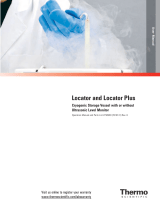 Thermo Fisher Scientific Locator and Locator Plus Manuale utente
Thermo Fisher Scientific Locator and Locator Plus Manuale utente
-
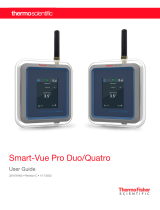 Thermo Fisher Scientific Smart-Vue Pro Duo and Quatro Guida utente
Thermo Fisher Scientific Smart-Vue Pro Duo and Quatro Guida utente
-
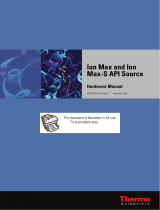 Thermo Fisher Scientific Ion Max and Ion Max-S API Source Manuale del proprietario
Thermo Fisher Scientific Ion Max and Ion Max-S API Source Manuale del proprietario
-
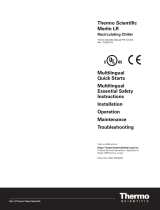 Thermo Fisher Scientific Merlin LR Recirculating Chiller Quick Start
Thermo Fisher Scientific Merlin LR Recirculating Chiller Quick Start
-
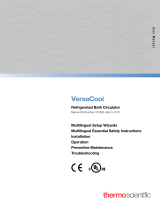 Thermo Fisher Scientific VersaCool Manuale utente
Thermo Fisher Scientific VersaCool Manuale utente
-
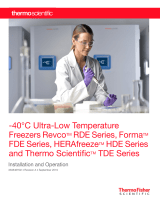 Thermo Fisher Scientific ULT Manuale del proprietario
Thermo Fisher Scientific ULT Manuale del proprietario
-
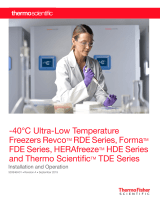 Thermo Fisher Scientific ULT Manuale del proprietario
Thermo Fisher Scientific ULT Manuale del proprietario
-
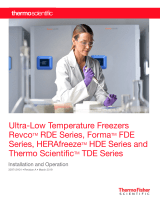 Thermo Fisher Scientific ULT Manuale del proprietario
Thermo Fisher Scientific ULT Manuale del proprietario

























































































































